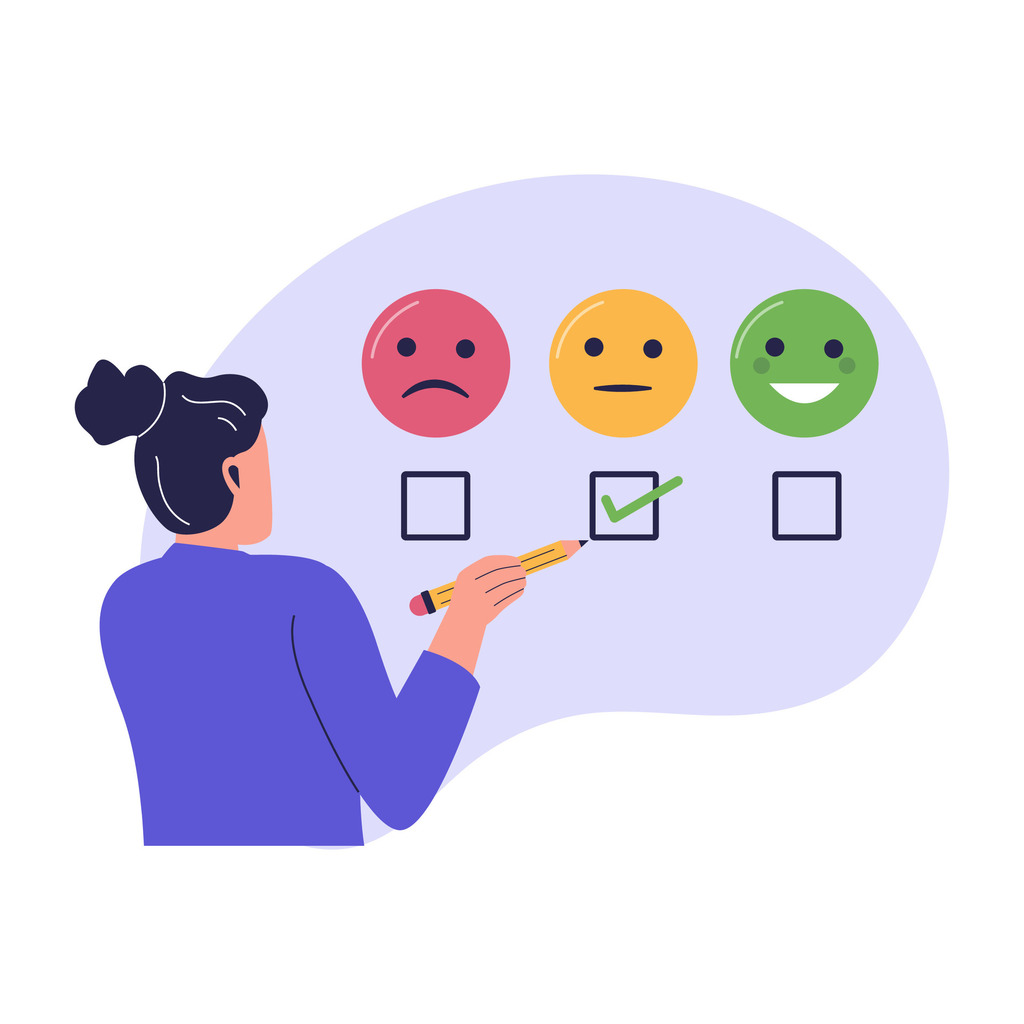Top Feedback Collection Forms to Enhance Customer Insights

Running a business without understanding your customers is like sailing blind. Today, Feedback Collection Forms are essential tools that transform customer opinions into actionable insights. Whether you’re measuring user experience, refining a product, or developing strategic initiatives, well-designed feedback forms help companies improve user satisfaction and drive sustainable growth.
Modern enterprises rely on structured methods to create feedback loops that guide decision-making. These tools gather responses from customers, employees, and partners, translating scattered comments into measurable metrics. Organizations using advanced feedback collection forms report 28% faster market adaptation compared to competitors relying on informal channels.
Organizations committed to refining their processes through structured data collection see measurable results. A 2023 industry study showed brands using optimized systems achieved 19% higher customer retention rates within six months. The methodology also accelerates product development cycles by aligning innovations with verified user needs.
Key Takeaways
- Structured data tools turn subjective opinions into measurable business metrics
- Digital interfaces provide real-time insights for faster decision-making
- Systematic analysis reduces operational risks and identifies growth opportunities
- Companies using these methods achieve higher client retention and satisfaction
- Data-driven strategies shorten product development timelines by 40% on average
Introduction: Why Feedback Collection Forms Matter for Business Growth
In fast-changing markets, businesses that use feedback strategically gain competitive advantages. Feedback Collection Forms translate diverse stakeholder opinions into data that shapes operational improvements. Structured systems eliminate guesswork and reveal gaps between customer expectations and business performance.
Understanding the Role of Feedback in Strategy
Effective strategies require more than intuition—they demand evidence. Systematic input analysis reveals patterns that manual reviews often miss. For example, recurring themes in customer responses frequently highlight unseen product flaws or service bottlenecks.
Businesses using these insights report:
- 35% faster identification of market trends
- 20% reduction in operational inefficiencies
- Stronger alignment between teams and customer expectations
The Impact on Customer Satisfaction and Growth
Regular input channels directly influence retention metrics. Organizations analyzing responses quarterly see 18% higher repeat purchase rates than those relying on annual surveys. This continuous loop of listening and adapting builds trust while preempting potential conflicts.
One retail chain improved satisfaction scores by 22% within four months by addressing common concerns from real-time data. Proactive adjustments based on stakeholder input also shorten product development cycles, ensuring innovations meet verified demands.
Exploring the Variety of Feedback Collection Forms

Modern organizations use specialized instruments to gather critical perspectives from different groups. These tools vary by purpose and audience, each designed to extract specific operational insights. Selecting the right format ensures businesses capture actionable data aligned with strategic goals.
Audience-Specific Data Solutions
Client-focused systems track satisfaction across purchase journeys. They reveal pain points in service delivery and highlight loyalty drivers. Retailers using these tools report 27% faster resolution of common complaints compared to generic surveys.
Workplace assessment instruments measure team morale and cultural alignment. A tech startup improved retention by 19% after addressing workflow issues identified through quarterly employee surveys. Product evaluation tools collect feature requests and usability ratings, directly shaping development roadmaps.
| Tool Type | Primary Purpose | Key Metrics |
|---|---|---|
| Client Experience | Measure satisfaction & loyalty | NPS, CSAT, retention rates |
| Team Dynamics | Assess workplace culture | Engagement scores, turnover rates |
| Product Development | Gather user preferences | Feature requests, usability ratings |
Multi-Source Performance Evaluation
360-degree assessments combine input from managers, peers, and direct reports. This method provides balanced performance reviews that reduce bias. Companies using this approach see 23% better leadership development outcomes than traditional top-down evaluations.
Peer review systems strengthen collaboration by fostering transparent communication. A financial services firm reduced interdepartmental conflicts by 31% after implementing structured peer evaluation processes. These methods create cultures of continuous improvement while aligning individual goals with organizational objectives.
How Feedback Forms Enhance Customer Satisfaction and Engagement
Businesses thrive when they align operations with customer expectations. Targeted evaluation tools bridge gaps between company actions and stakeholder needs, creating measurable improvements in loyalty and operational efficiency.
Quantifying Loyalty Through Standardized Metrics
Net Promoter Score (NPS) systems measure recommendation likelihood using an 11-point scale. This single-question approach generates clear benchmarks for tracking loyalty trends across demographics. Companies analyzing NPS quarterly identify promoter groups 40% faster than those using annual surveys.
Customer Effort Score (CES) assessments reveal friction in specific interactions. A 2023 retail study showed brands optimizing high-effort processes reduced support tickets by 33%. These metrics directly correlate with repeat purchase rates and operational costs.
| Metric | Primary Focus | Strategic Impact |
|---|---|---|
| NPS | Long-term loyalty | Identifies brand advocates |
| CES | Interaction efficiency | Reduces service costs |
Uncovering Hidden Opportunities Through Dialogue
Thoughtfully placed free-response fields capture insights structured scales miss. One SaaS company discovered a 19% revenue opportunity through feature requests in comment sections. These qualitative inputs complement numerical data, creating complete customer profiles.
Best practices for open-ended fields:
- Position after rating questions for context
- Use prompts like “What surprised you most?”
- Analyze responses with sentiment tools
Organizations blending NPS/CES data with narrative feedback achieve 28% higher resolution rates for identified issues. This dual approach turns raw information into strategic roadmaps for sustainable growth.
Best Practices for Creating Effective Feedback Forms

High-performing organizations treat feedback tools as precision instruments rather than generic checklists. Strategic design transforms these resources into reliable data pipelines that drive measurable improvements.
Keeping It Short, Simple, and User-Friendly
Concise forms yield higher completion rates. Limit questions to 5-7 core items directly tied to business goals. For example:
| Form Length | Avg. Completion Rate | Data Quality Score |
|---|---|---|
| 3-5 questions | 82% | 4.7/5 |
| 8-10 questions | 61% | 4.1/5 |
Use plain language and familiar rating systems like 1-5 scales. Logical question flow guides users naturally from broad impressions to specific suggestions.
Design Consistency and Responsive Layouts
Cross-device functionality ensures accessibility. A 2023 UX study showed mobile-optimized forms achieve 39% faster submissions than desktop-only versions. Key design elements include:
| Device Type | Load Speed | Error Rate |
|---|---|---|
| Mobile | 1.8s | 4% |
| Desktop | 2.3s | 6% |
Brand-aligned colors and fonts build credibility. White space between sections reduces cognitive load, helping users focus on essential queries. Conditional logic skips irrelevant questions, maintaining momentum.
Customization and Template Options for Feedback Forms

Strategic organizations leverage pre-built frameworks to accelerate data gathering while maintaining flexibility. A curated library of 25+ specialized templates helps teams measure everything from customer journeys to remote work efficiency without starting from scratch.
Optimized Foundations for Every Scenario
Pre-designed solutions cover common use cases while allowing customization. For example:
| Template Type | Key Applications | Response Rate |
|---|---|---|
| NPS/CES | Loyalty tracking | 73% avg. |
| 360-Degree | Performance reviews | 68% avg. |
| Anonymous | Sensitive topics | 81% avg. |
Healthcare providers using patient experience templates reduced survey creation time by 62%. Real-time editors let teams modify questions, scales, and branding in minutes.
Adaptation for Precision Insights
Effective customization aligns tools with organizational priorities. A financial services firm achieved 94% completion rates by adding compliance-specific questions to standard client assessment forms.
Three essential adjustments:
- Industry-specific terminology
- Departmental goal alignment
- Mobile-first design elements
Professional services companies using customized templates report 28% faster data analysis cycles. This approach maintains core best practices while addressing unique business needs.
Leveraging AI, Automation, and Omnichannel Strategies
In particular, forward-thinking companies now deploy intelligent systems to transform stakeholder input into strategic fuel. As a result, these technologies process vast information streams at unprecedented speeds, turning everyday interactions into competitive advantages.
Automating Distribution and Analyzing Sentiment
AI-driven sentiment tools scan language patterns across multiple channels. They detect frustration or enthusiasm in real time, alerting teams to urgent needs. A retail chain using these systems reduced complaint resolution time by 41% through instant issue prioritization.
Automated distribution ensures evaluation requests reach users when engagement peaks. One SaaS company saw 67% higher response rates by syncing surveys with product usage patterns. Platforms like CRM automation solutions enable personalized delivery schedules across email, SMS, and in-app channels.
Omnichannel design tailors questions to each platform’s strengths. Mobile-first formats use swipeable scales, while web versions incorporate interactive elements. This approach respects user preferences while maintaining consistent metrics.
Specifically, machine learning algorithms predict behavioral shifts by analyzing response trends. Consequently, they flag emerging issues weeks before traditional methods, allowing proactive adjustments. Notably, financial institutions using predictive models report 29% fewer customer churn incidents annually.
Real-time dashboards convert raw data into visual insights for rapid decision-making. Teams identify improvement areas faster, reducing analysis time by 55% compared to manual processes. These systems turn stakeholder voices into clear operational roadmaps.
Real-Time Data Analysis and Converting Feedback to Action

In today’s data-driven world, modern enterprises swim in rivers of data, but only those who filter meaningful patterns thrive. Through cutting-edge techniques, advanced analytics convert raw numbers and text into navigational charts for strategic decisions. As a consequence, this process transforms operational guesswork into targeted improvements.
Interpreting Quantitative Metrics
Numbers tell stories when analyzed correctly. Daily dashboard reviews help teams spot satisfaction trends before they impact revenue. A 2023 tech study found companies tracking weekly metrics resolved issues 47% faster than monthly reporters.
| Metric Type | Analysis Tool | Strategic Impact |
|---|---|---|
| NPS Trends | Regression Analysis | Predicts retention risks |
| CES Averages | Heat Maps | Identifies process bottlenecks |
Cross-departmental benchmarks reveal performance gaps. Sales teams using real-time conversion data improved lead follow-up speed by 33% in one quarter.
Utilizing Customer Comments for Continuous Improvement
Verbal insights complete the data puzzle. Natural language processing tools scan thousands of comments hourly, flagging urgent concerns. One logistics firm reduced delivery complaints by 28% after addressing frequent mention of “late afternoon delays.”
Best practices for comment analysis:
- Cluster similar phrases using AI algorithms
- Prioritize recurring themes in product meetings
- Share verbatim quotes with frontline teams
Organizations blending metrics with narrative insights achieve 19% higher ROI on improvement initiatives. This dual approach turns information streams into operational upgrades that customers notice and reward.
Enhancing User Experience Through Feedback Form Design
The key to actionable data lies in tools that respect the user’s time and device. Intuitive navigation and cross-platform compatibility directly influence completion rates while capturing accurate insights. Businesses prioritizing these elements see 40% higher response quality compared to generic designs.
Clear Labeling and Logical Question Order
Descriptive field labels eliminate guesswork, reducing input errors by 27% in field tests. Placing demographic questions before opinion-based ones creates natural progression. A healthcare provider improved survey accuracy by 19% after restructuring queries from broad to specific.
Logical flows mimic real conversations, keeping completion rates above 73% even in lengthy assessments. Conditional branching adapts follow-up questions based on previous answers, maintaining relevance without overwhelming respondents.
Optimizing Forms for Mobile and Cross-Platform Use
Responsive layouts adjust to screen sizes, ensuring seamless use on any device. Touch-friendly elements like larger buttons reduce mobile abandonment by 33%. A retail brand saw 22% faster submissions after implementing swipeable rating scales for smartphone users.
Optional fields empower users to share details voluntarily, increasing completion rates by 25%. Designers should prioritize vertical scrolling on mobile and grid layouts for desktop—aligning with how 89% of users interact with digital tools.

